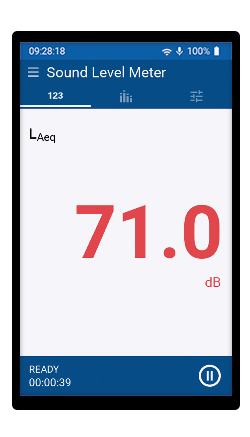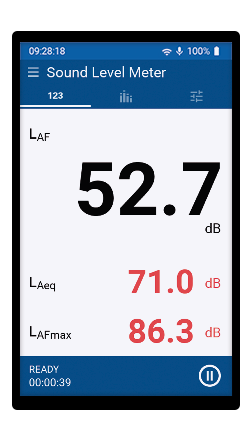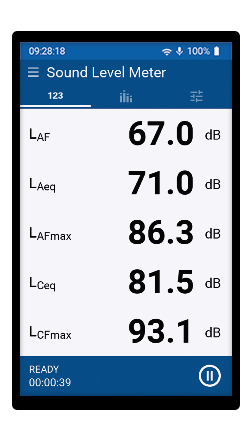The XL3 forms a class 1 sound level meter in combination with the measurement microphones M2230 or M2340. All sound pressure levels are measured precisely at the same time and presented in large digits on the color display. Readings exceeding the preset limit turn red indicating non-compliance, while the data is logged in 1 second intervals and the audio is recorded simultaneously. The XL3 is the perfect tool for an easy investigation of noise complaints and long-term noise monitoring.



At the same time, the XL3 Sound Level Meter is optimized for unattended noise monitoring. The instrument automatically continues the measurement as soon as power resumes in case of an accidental power failure. The long battery life time and the versatile connectivity options allow online control from your preferred web browser from anywhere around the globe including audio streaming for live listening. A weather station may be connected directly to the XL3 and external devices controlled via the accessory I/O-PCB.
All stored measurement data is available in simple text format. Detailed data evaluation and rating level calculations are carried out in the optional Data Explorer PC Software.
Features
- Standards
- Class 1 using M2230 or M2340 Measurement Microphone
- IEC 61672, IEC 60651, IEC 60804, IEC 61260
- Germany: DIN 45645-1, DIN 45645-2
- Japan: JIS C1509-1:2005, JIS C 1513 class 1, JIS C 1514 class 0
- US: ANSI S1.4:2014, ANSI S1.43, ANSI S1.11:2014
- Sound levels
- SPL actual, Lmin, Lmax, Lpeak, Leq, gliding Leq
- Clock-impulse maximum level "TaktMax" in accordance with DIN 45645-1
- Calculated levels LCeq - LAeq, LAFT5eq -LAeq
- Frequency weighting: A, C, Z (=flat) simultaneously
- Time weighting: Fast, slow and optional impulse simultaneously
- Correction values k1, k2
- Indicators show when sound level limits are exceeded
- Calculated levels: LAIeq - LAeq (optional)
- Digital I/O interface for the control of external peripherals (planned)
- Sound Exposure Level LAE (optional)
- Percentile statistics for Lxy (x= A, C or Z, y= F, S or EQ1"): 0.1 – 99.9% (optional)
- Level-time history graph
- Back-erase (optional, planned)
- Pre-trigger (optional, planned)
- Logging and Reporting
- All levels simultaneously
- Short-time levels including spectrum for 1 second
- Wav-file for listening (compressed)
- Data logging in 100 ms intervals (optional)
- Linear audio: 24, 32 bit with 12, 24, 48, 96 kHz (optional)